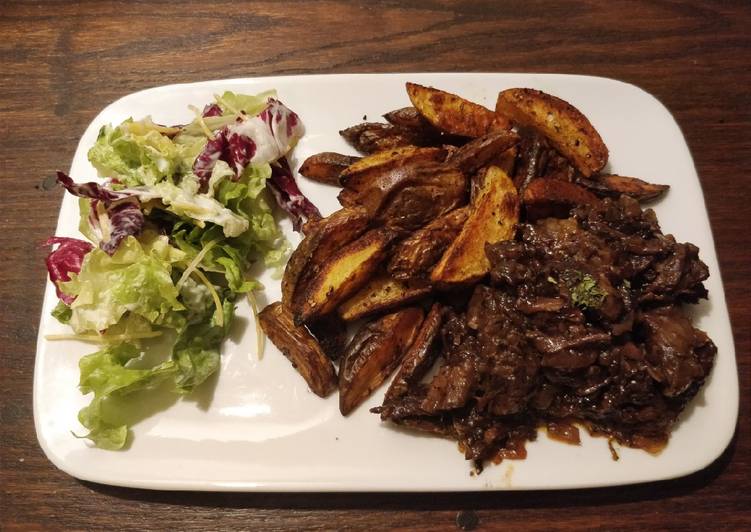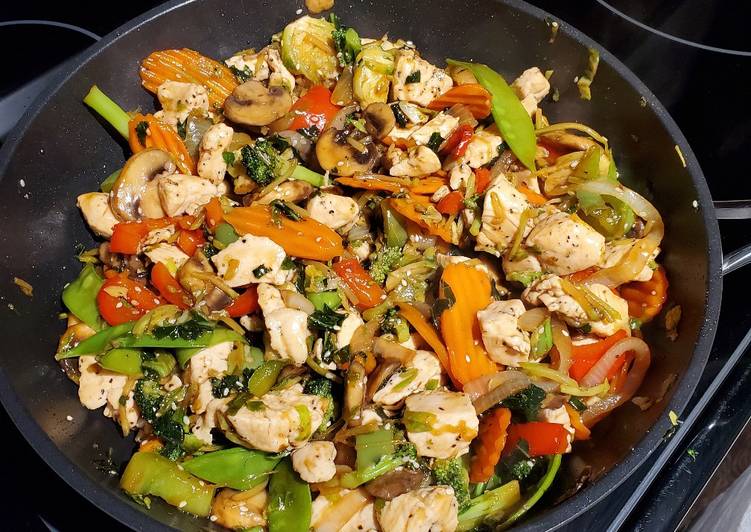
Hello everybody, it’s Brad, welcome to our recipe page. Today, we’re going to prepare a distinctive dish, 'indonesian' beef stew. It is one of my favorites food recipes. This time, I am going to make it a bit tasty. This is gonna smell and look delicious.
Empal gentong beef stew recipe can be cooked by yourself. Complete with explanations simple and easy to understand. This meal is from Cirebon, West Java. This luscious Indonesian dish, from a recipe in James Oseland's book Cradle of Flavor (W.
'Indonesian' beef stew is one of the most well liked of recent trending foods on earth. It’s enjoyed by millions daily. It is simple, it’s quick, it tastes yummy. 'Indonesian' beef stew is something which I’ve loved my whole life. They’re fine and they look fantastic.
To begin with this recipe, we have to prepare a few ingredients. You can have 'indonesian' beef stew using 12 ingredients and 12 steps. Here is how you can achieve that.
The ingredients needed to make 'Indonesian' beef stew:
- Get 2 small onions
- Make ready 1 glove of garlic
- Get 2 tbs butter
- Prepare 400 g beef, rib or other stew cuts
- Take 100 ml red wine
- Prepare 100 ml water
- Take 5 tbs ketjap (or soy sauce)
- Make ready 3 thyme springs (or 1tbs dried thyme)
- Prepare 2 bayleafs
- Make ready 4 cloves
- Take 2 tbs tomato ketchup
- Make ready 1 tbs potato starch (or general binding agent)
Beef Rendang - the best and authentic beef rendang recipe online! Spicy, rich and creamy Malaysian/Indonesian beef stew made with beef, spices and coconut milk. Indonesian Beef Rendang. this link is to an external site that may or may not meet accessibility. Translations of the phrase BEEF STEW from english to indonesian and examples of the use of "BEEF STEW" in a sentence with their translations Translation of Beef Stew in Indonesian.
Steps to make 'Indonesian' beef stew:
- Roughly chop the onions and peel the garlic.
- Season the beef generously on both sides with salt and pepper.
- On medium heat melt some butter and start cooking the onions and the garlic. Use a garlic press, or mince the garlic.
- When the onions are halfway there, make room for the beef. You could do this in stages, but why bother…
- Brown the beef on both sides. Render out as much fat as you can.
- Pour the ketjap over the meat and give it a minute to boil and let it flavor the beef. Don't let it evaporate completely though. Don't worry if it is too much or too little, you can adjust for salt with the final seasoning.
- From the side of the pan, add the wine and the water. It should just cover the meat, depending on the size of the pan.
- Add the spices and the tomato ketchup and stir till combined.
- Cover and let simmer for at least 4 hours. Check every hour or so for liquid, and add water if it appears to become dry. Also turn the beef over to help even cooking. It may fall apart already, that is fine.
- After this time break up the beef into chunks of your desired size. And remove the thyme springs and bayleafs.
- Mix the potato starch with a teaspoon of cold water and mix it up, before stirring it through the stew. Taste and add salt and pepper to taste.
- Serve with fries, potatoes, rice or just plain. And don't forget to eat some vegetables as well.
Indonesian Beef Rendang. this link is to an external site that may or may not meet accessibility. Translations of the phrase BEEF STEW from english to indonesian and examples of the use of "BEEF STEW" in a sentence with their translations Translation of Beef Stew in Indonesian. Semur is an Indonesian term for type of meat stew that is processed in thick brown gravy. I also used beef back ribs. These type of ribs are usually used for grilling.
So that is going to wrap this up for this exceptional food 'indonesian' beef stew recipe. Thanks so much for reading. I’m confident that you will make this at home. There’s gonna be interesting food in home recipes coming up. Remember to save this page in your browser, and share it to your loved ones, colleague and friends. Thanks again for reading. Go on get cooking!


